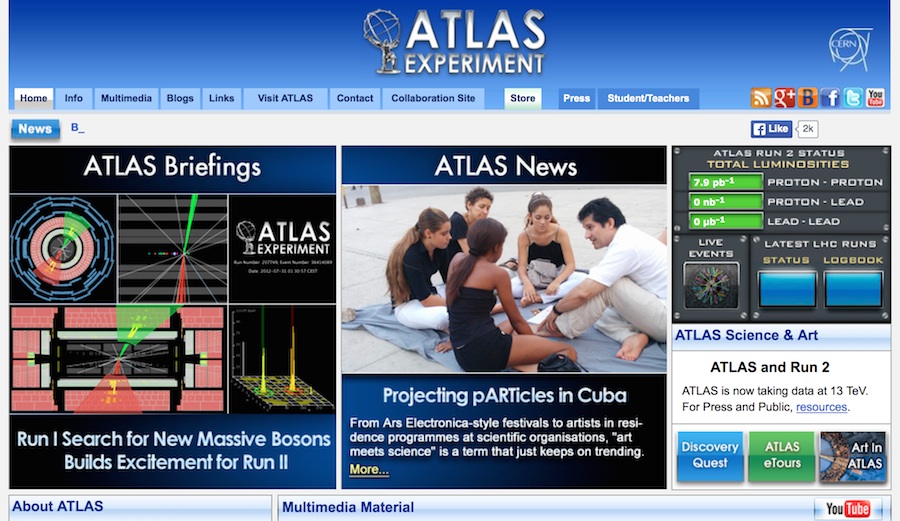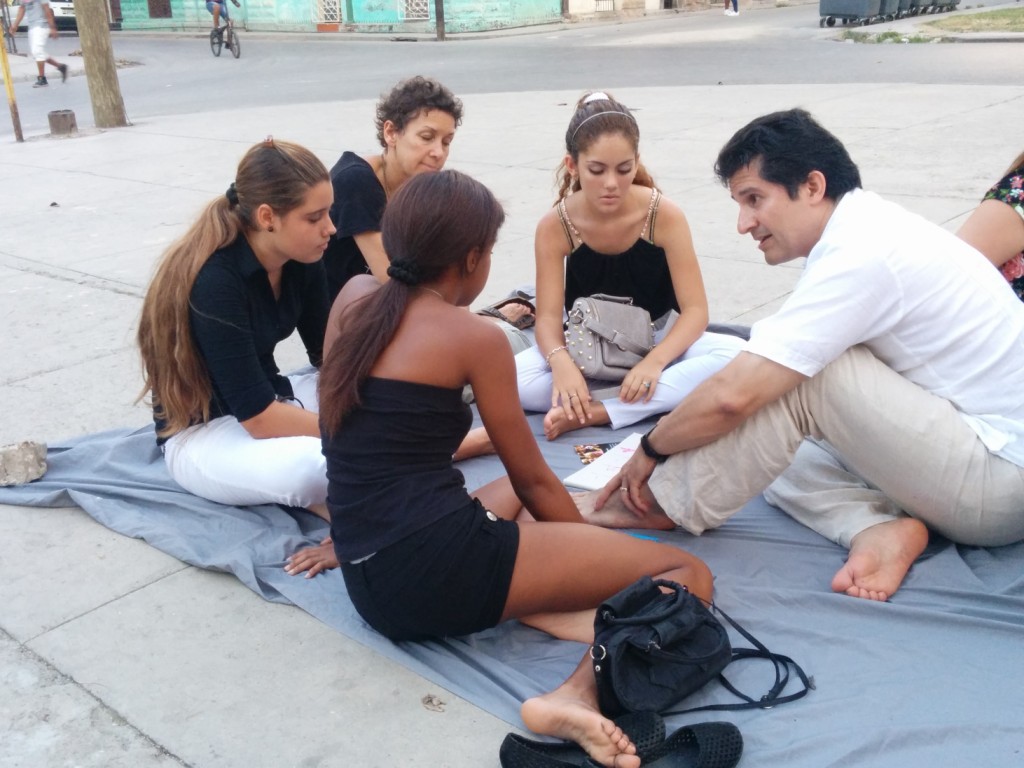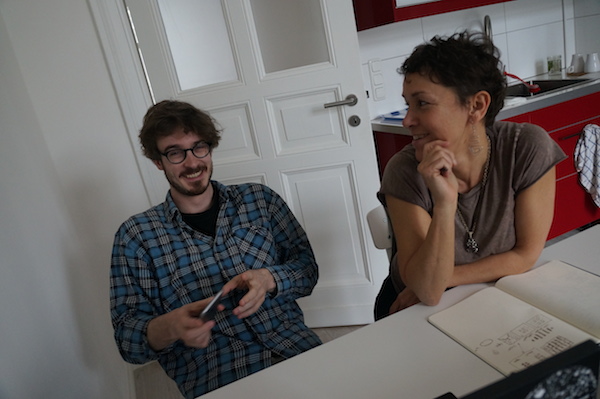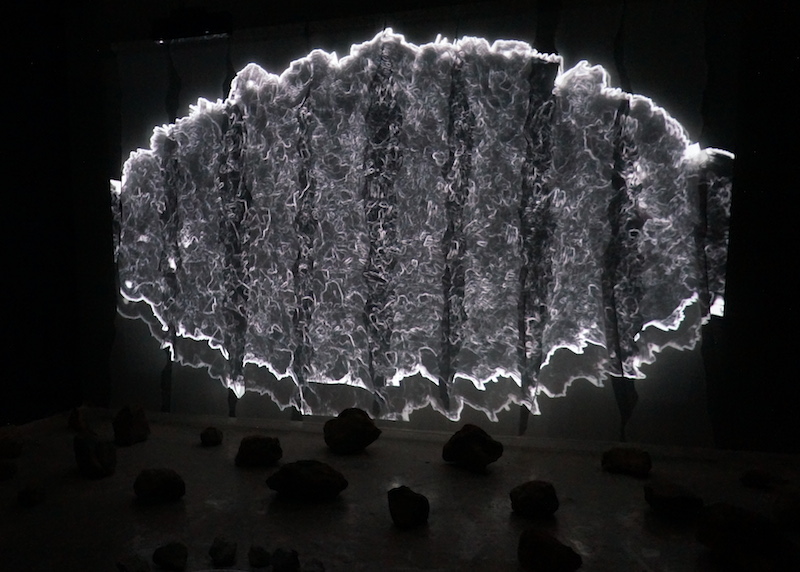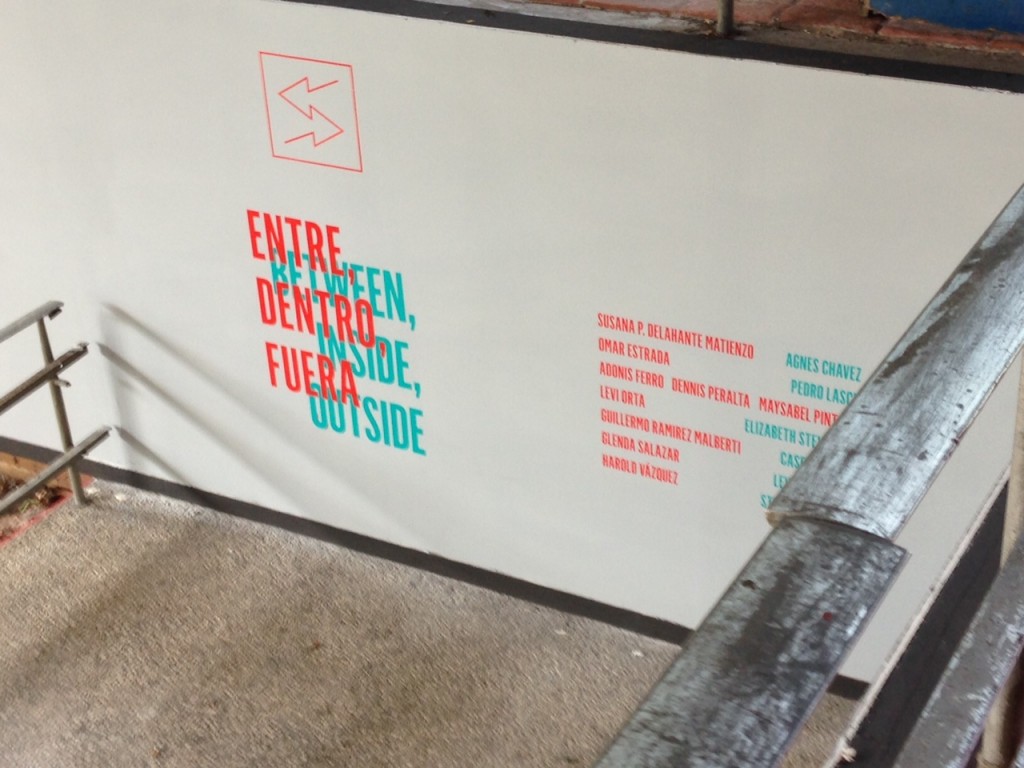Lorraine Monteagut, contributing blogger
It’s been a couple weeks since we’ve returned from Havana, and still we are processing all the rich interactions in our short time there. I had the opportunity to take a broad perspective of the Biennial, as I observed the pARTicles team set up and inaugurate their installation, and I also spent much time walking the streets of Havana on my own.
As a Cuban American, I felt both like an insider and an outsider. I had easy conversations with the many strangers who approached me and made a few friends who showed me around. We talked about our shared culture and our hopes for the future of U.S.-Cuba relations. We shared photos of our families. And still, it was clear that there was much we could never share, that I was outside their experience and always would be, as their political and economic situation is like none other in the world.
To keep with the spirit of the exhibit’s theme–“Between, Inside, Outside”–I’ll share three of the many interactions I had in my ten days in Havana that illustrate the shifting nature of place and identity I felt as I “returned” to a homeland I’d never physically known.
An Impromptu Guide

Many Cubans take to the streets in hopes of meeting tourists to escort around town. They are sometimes tipped by establishments for bringing in tourist business. I didn’t know any of this when I ran into this man while making my way toward Old Havana on the Malecon. He asked me where I was from (the typical first line to getting a tourist’s attention), and when I started speaking spanish, he asked me where I was “really” from. This would become the model of questioning over the following week. My place of birth marked me as an American, yet my language linked me to this country that was at once alien and familiar.
My impromptu guide redirected me to interior streets that would take me through Centro Havana, where I could find nice cigars, and ultimately to my destination in Old Havana. As we walked, he showed me a faded photo of his daughter and told me about the ration cards (the “libretas”) that provided each Cuban with items such as rice, beans and bread for the month (I’d later see these ration cards in person, people lining city blocks for their daily bread).
My guide said it wasn’t enough, that they could get more ration cards if they brought business in, and he asked me if I’d go with him to one such establishment where cigar “cooperatives” were selling top cigars at half price, for just this one day. At this point, my spidey sense went off, as I’d heard of such schemes when preparing for my trip. I felt conflicted, because this man was both sincere and wiley–one of the many paradoxes I found in Havana. I realized that as friendly as he was, as much as we connected with the language, I was still a tourist to him. I declined and excused myself, opting to take my chances on my own.
A Forthcoming Taxi Driver

As a Floridian, I’m no stranger to beautiful coastlines, so I almost passed on the beach trip. I’m glad I didn’t, as I met a lovely cab driver named Usmael, who dropped me off at Santa Maria del Mar, one of the closest beaches to Havana. On the way there, he talked freely about the changes happening and his hopes for the future of his family. He said he would like to see his sister and father again one day, who escaped to Florida years ago. He helped me distinguish between police and military, pointed out the propaganda on the streets, and showed me the spot on the beach where his friends attempted to escape, most of whom drowned or were caught. He was nice enough to schedule a time to pick me up, since I’d probably have to wait long for a ride back, but he made me promise I wouldn’t leave him stranded. When I got back into his backseat, rosy and sandy, he glanced at the bottle of Anejo in the crook of my arm. “Make sure you hide that when you get back out. You have the face of a child.”
A Hospitable Family

One of the highlights of my trip was my stint as a translator for a German-American architect who was interested in a recent renovation in Old Havana. We met with the Cuban man who acted as an informal project manager, the go-between for Swiss investors and the Office of the City Historian, run by Eusebio Leal, who is in charge of historical preservation. We were invited into the apartment homes of one of the families impacted by this renovation. The matriarch of the family was supremely hospitable, ushering us in to sit and chat. Her daughters were home and equally friendly. One, a 27-year-old and a new mother, told me how grateful she was for their new home, which now housed three generations of her family.
The renovation took decades to complete (our guide said he often had to take things into his own hands in order to get them done, as the government would have had them wait even longer). When the renovation began, the daughters were young girls. They were relocated to mass housing outside the city center in the meantime, and their future was uncertain. Now, their own children can enjoy a stable home all their lives. I asked the daughter if she ever thought about leaving Havana, and she said she would never dream of it. She heard that people in the United States worked too much and weren’t as inclined to come together and help each other.
I couldn’t argue with her there.
Indeed, I felt an immediate contradiction between the joy and drive of the Cuban people and the hard conditions of their lives. At any given time, I couldn’t tell if I was in heaven or in hell. Some parts of town look like living ruins, people living en masse in crumbling homes. Yet the Cuban people are welcoming and full of life, making the best of everything. I did not feel a hint of despair. I couldn’t help comparing Havana to my home in Florida, where I know many people who feel stuck in their jobs, who struggle to keep a level of material wealth they aren’t sure they want or need, who rely on prescription medication to fight back depression and stagnation every day.
As I look to the future of Cuba-U.S. relations, I wonder just how Cuba will change, and I wonder which way is better. I think the answer rests somewhere in between our worlds…
Lorraine Monteagut is a Ph.D. candidate in Communication at the University of South Florida in Tampa. Follow her summer travels: roguegeographer.wordpress.com

